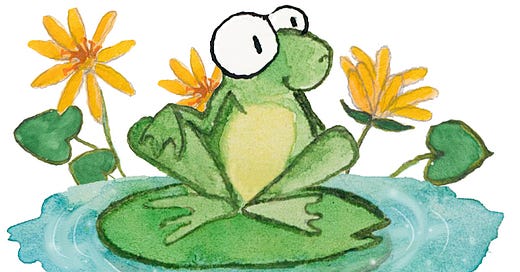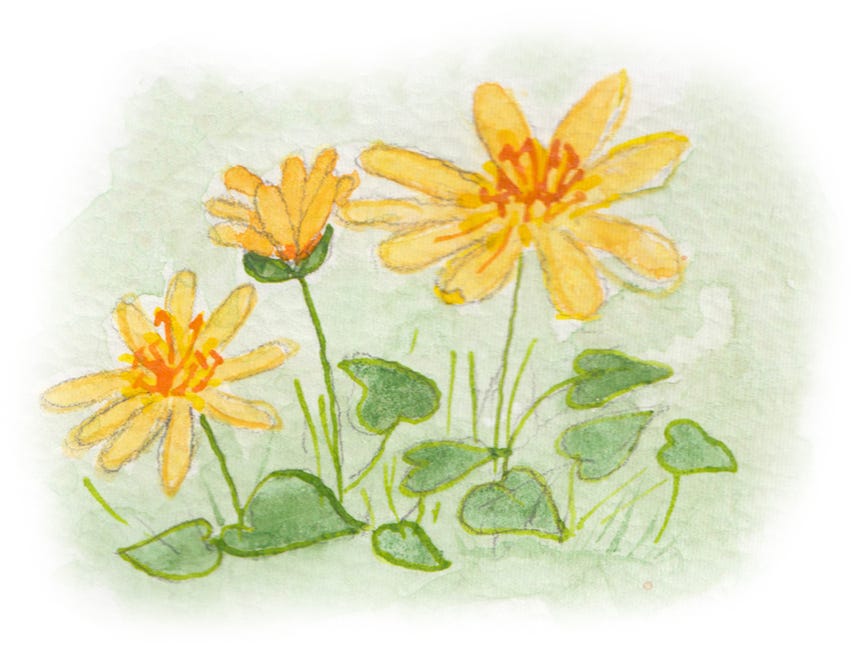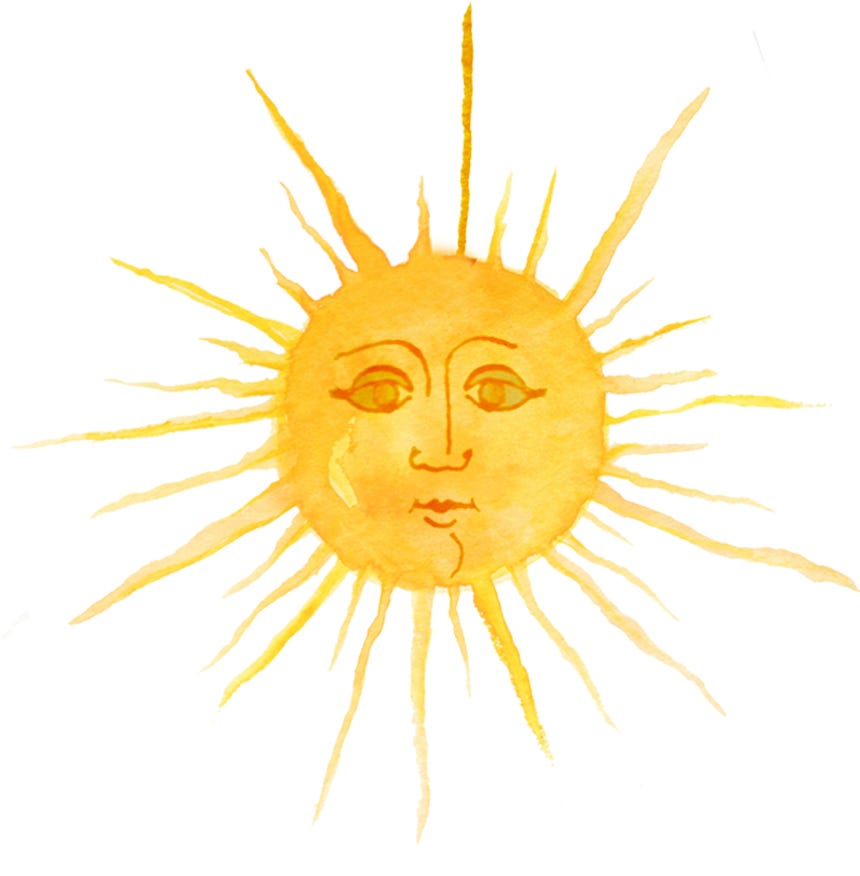The Lesser Celandine is a springtime (Verna) plant which likes to live near water, not unlike the little frogs of its latin name ‘Ranunculus’, with roots that look a bit like figs (Ficaria).
The old herbalists, including Culpeper in the 17th century, used to call both the Greater and Lesser Celandine simply ‘Celandine’, causing considerable confusion - something you really don’t want when one of the plants, the one we now call the ‘Greater’, was used to cure eye trouble and the other, now called the ‘Lesser’, was used to cure piles. Mix ups would have been extremely unwelcome and possibly eye-watering (in whichever direction the confusion occurred).
Using the same word seems additionally odd as the Greater Celandine was - and still is - a member of a completely different family, the poppy, latin name ‘Chelidonium Majus’. Much safer to use the common name, ‘Pilewort’.
The name, ‘Pilewort’ was another case of sympathetic magic, where the ancients decided that if a plant looked like something, it was bound to cure the thing it looked like. In the case of Pilewort, the long, somewhat bulbous roots look like piles. Apparently.
Rembert Dodoens (1517 - 1585) Flemish physician and botanist, advised in his herbal ‘Cruydboeck’ (herb book), to mix the juice of the Lesser Celandine root (which he called speenkruid (‘speen’ is an old Dutch word for piles) with wine, and regularly wash the affected area with the concoction. He wrote that the piles would then shrivel and fall off, and in no time the pain would be forgotten.
Culpeper recommended making an ointment out of the leaves and the roots and to apply it generously where needed. He also proposed it as a cure for the ‘king’s-evil’, a form of tuberculosis (which we now know as Scrofula or Tuberculous lymphadenitis) in the area where the lymph nodes swell. He claimed to have cured his own daughter from the king’s-evil using his Lesser Celandine ointment.
The famous herbalist John Gerard (1545 - 1612), originally a barber-surgeon, later a keen gardener in Holborn, wrote in his 1,484 page herbal:
“'The juice of the roots mixed with honie and drawn up into the nosthrils purgeth the head of foul and filthy humours. The later age use the roots and graines for the piles . . . there be also who think that if the berbe be but carried about one that hath the piles, the pain forthwith ceaseth.”
The word Celandine for the Lesser Celandine, comes from ‘Celi’ Latin for ‘heaven’ and ‘Donum’ Latin for gift. One can imagine that for those who felt the pain from their affliction ending, it would indeed feel like a gift from heaven. In addition to the above mentioned medical properties, Celandine leaves are full of vitamin C and were used to prevent and cure scurvy. In Germany, where it was commonly used as such, it is known as ‘Scharbockskraut’, Scurvy-wort. You do have to eat the leaves before the flowers bloom though, as at that point the plant becomes poisonous. Perhaps safer to eat an orange.
Another name for Lesser Celandine is the Celtic name Grian (the sun). The bright yellow sun-like flowers only open when the sun shines. The blooms even close before it rains, making them a little weather forecasting service, possibly even a little more reliable than modern conventional forecasters.
Lesser Celandine is also known as Dusky Maiden, because of the dark markings on the leaves. And figwort, for those who see figs rather than other things in the shape of the roots.
This newsletter is NOT a field guide for flower identification. It’s often difficult to tell the difference between harmless plants and poisonous plants and some flowers are rare and protected by law, so, NEVER pick or use any plants or flowers if you’re not sure about them.
illustrations and text ©Chantal Bourgonje















Funnily enough, I saw my first lesser celandine in flower today. I love looking out for these early blooms cheering us all on through the end of winter and into spring. Enjoyed this post, thank you.
Interesting read